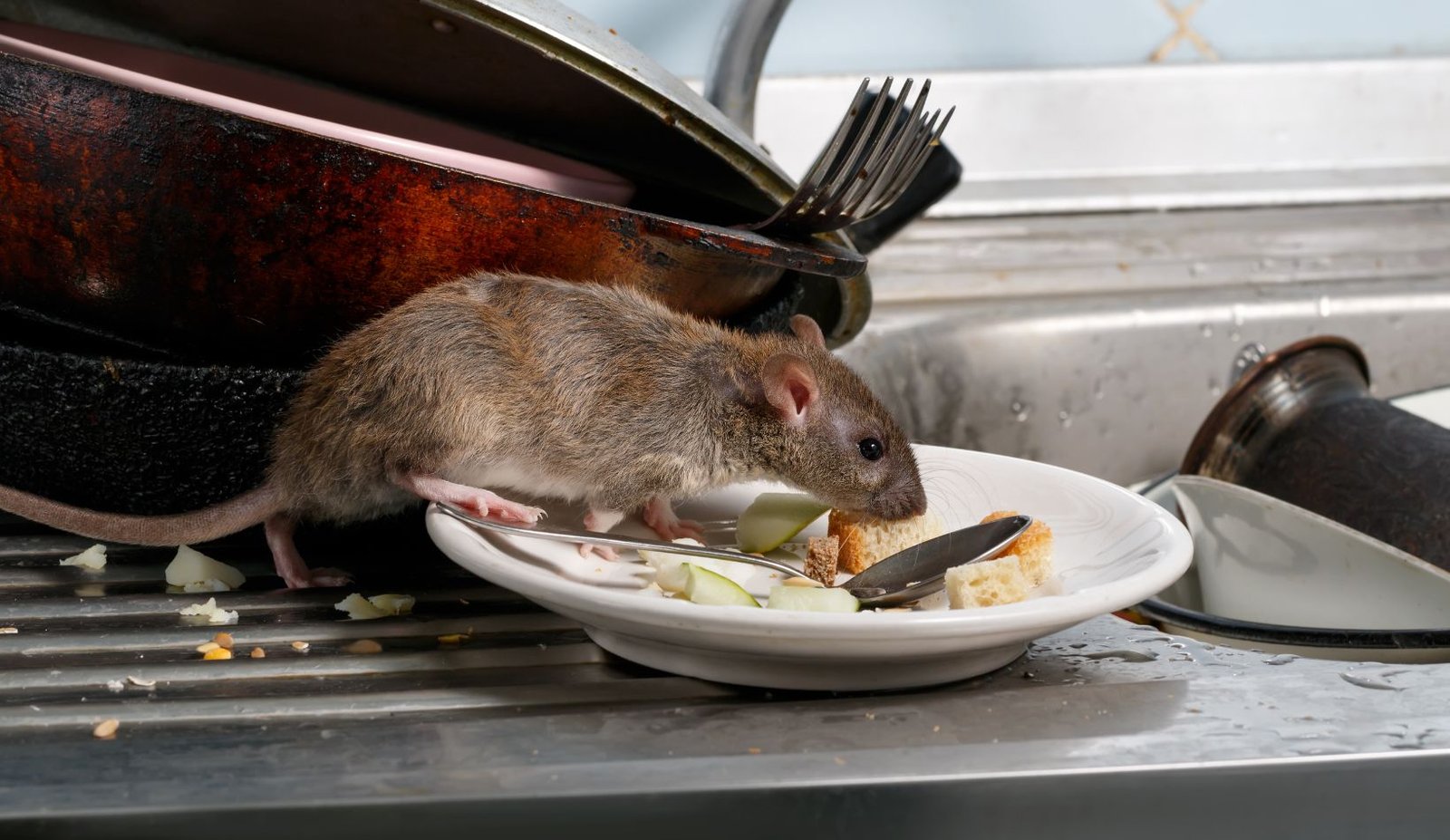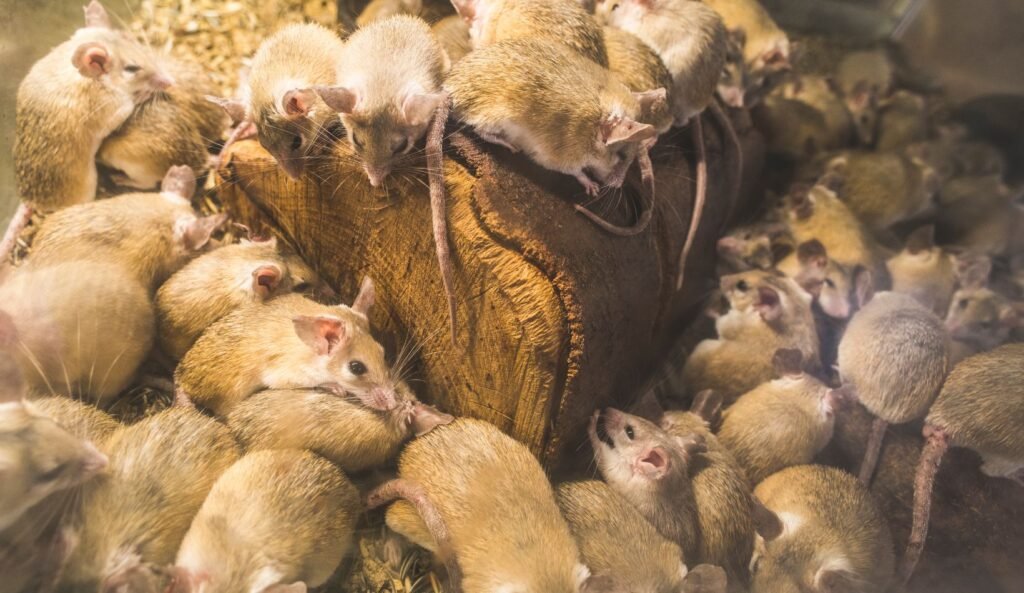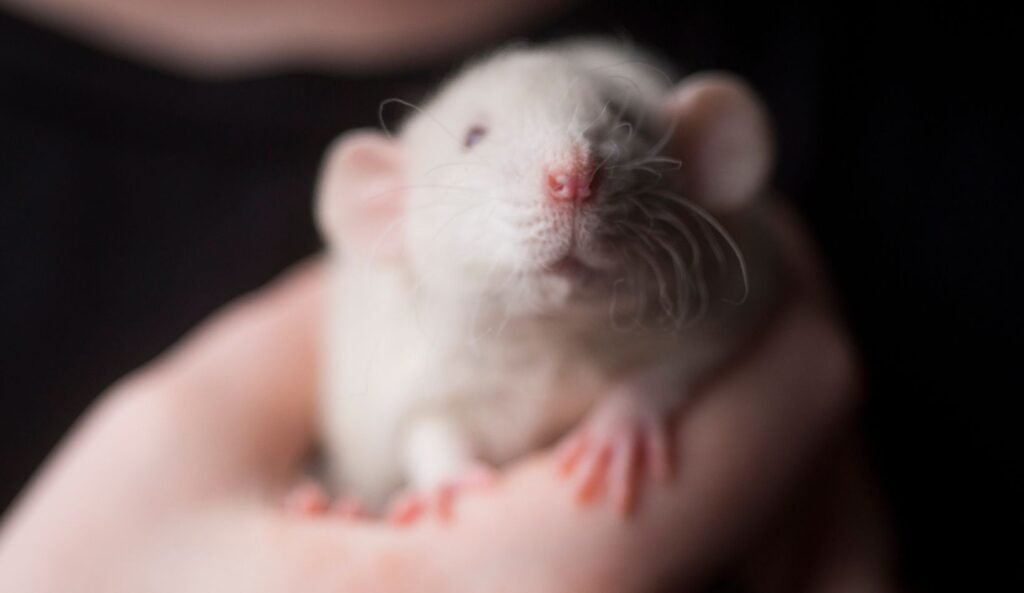Deratisation – rodent extermination

Table of contents
Do you hear strange rustling noises at home or at work, or see shadows flickering across the floor? That means you have unwelcome guests – rodents that can infect you and your pets with diseases and damage your property. To protect yourself from the negative effects of rodents, you should postpone rodent extermination.
WHAT IS DERATISATION?
Deratisation is a set of measures that includes monitoring, repelling and eliminating rodents using specific methods and tools. Deratisation is carried out by pest control technicians.
HOW IS DERATISATION CARRIED OUT?
The first step is an inspection – an internal and external inspection of the facility where the rodents have taken up residence and an assessment of its sanitary technical condition. It is important to stress that all the premises and grounds of the facility must be inspected. The next step is the identification of the rodent species. Only after an accurate assessment of the rodent species will it be possible to adapt the methods and means for their eradication.
HOW TO IDENTIFY A RODENT?
Once the rodent has been identified, the level of infestation of the facility must be determined. For this purpose, traps may be set up, which are checked after three days and the number of rodents caught used to assess the level of infestation. A more accurate method is the use of control talc sites. Talc or white clay is used for the construction of control sites. The powder is spread in a layer about 1,5 mm thick and in rectangular patches of 15 x 30 cm. The next day, rodent footprints are searched for in the talc layer.
This method assesses the overall infectivity (present – absent). However, quantification is quite difficult as a single rodent may pass through a control site several times, so the number of traces will not necessarily reflect the size of the rodent population.
The advantage of this method is that it can identify pest species. Another method to assess infestation is the check-feeding point method. This uses bait boxes in which special non-toxic bait is placed. After 1 to 3 days, the bait is collected and weighed. The difference in weight indicates the amount of bait eaten by the rodents. However, the method of control feeding does not allow an accurate determination of the rodent species.

LEVEL OF RODENT INFESTATION
There are other indications of rodent presence that can be used to judge the level of infestation:
- Live rodent monitoring. If rodents are seen during the day, a large rodent population is likely.
- Faeces. This is one of the most informative signs that can be used to determine not only the species of rodent but also the approximate level of infestation.
- Squeaking, scratching and gnawing noises can indicate areas where rodents are established.
- Urine. Both wet and dried rodent urine glows a bluish-white or yellowish colour under ultraviolet light.
- Fat spots. Mice and rats leave grease marks in their tracks and in commonly used wall, floor and ceiling cavities.
- Footprints. Rodent tracks are visible on dusty surfaces or damp ground.
- Gnawing. Gnaw marks are most often found on food packaging, on doors, near small holes and crevices. Mice can be easily distinguished from rats by the marks left by the front teeth.
- Caves are found on the outside of buildings near the walls. Inside buildings, caves may be dug near the walls where the horizontal surface meets the vertical. To find out if a cave is inhabited by rodents, the cave should be plugged with paper and covered with an unstable layer of earth. If there are rodents, the cave will be open again in the morning.
- If there is a large population of mice or rats, a specific smell will be detected.
- Paths, as rodents usually walk along the same paths every day.
WHAT RODENTS NEED TO SURVIVE
Rodents need three things to survive: food, water and shelter. Eliminating the food source is therefore a key step in eradicating these pests. In the absence of food, rodents are killed within 2-3 days, and in the absence of food and water within 20-25 hours. All these measures help to reduce the presence of rodents, but due to their rapid viscidity, they do not ensure that the rodent population is reduced to a non-threatening level.
METHODS FOR THE ERADICATION OF MICE AND RATS
The main methods of killing mice and rats are:
- chemical,
- mechanical,
- physical,
- biological.
Rodenticides are chemicals used for the chemical control of rodents. Rodenticides are divided into two groups according to their mode of action: fast-acting and slow-acting.
The latter are commonly referred to as anticoagulants, which inhibit blood clotting. All rodenticides are harmful and dangerous if used incorrectly.
Products must be used according to the manufacturer’s instructions and do not pose any unwanted risks or hazards to humans, pets or the environment.
In order to use the product correctly, it is essential to be familiar with its properties, the requirements on the label and all descriptive material.
HOW TO DETER RODENTS?
There are several types of repellents available to kill rodents, but their effectiveness is questionable. They need to be used in large quantities and require a relatively high concentration of repellent substances to be effective. Products of natural origin, such as cayenne, jalapeno and habanero peppers, can also be used to deter rodents. Powders or tinctures of these peppers are used to stop rodents from penetrating building walls, doors or other easily penetrable areas.
COMMONLY USED RODENTICIDES
Rodenticide powders are mainly anticoagulant (blood-clotting) rodenticides. The powder is sprinkled on the areas where the rodent is most likely to climb on it or otherwise touch it. The powder sticks to the paws and fur of rodents, so that they ingest it when they bathe. However, the powder does not have rodent-attracting properties, is easily dispersible and can pose a risk to humans. Rodents can also carry the powder on their bodies and contaminate surrounding areas, causing serious problems.

TRAPS
The mechanical method includes spring traps made of wood, metal or plastic and designed to kill the rodent (mousetraps and rat-traps). Rodent traps are used for mice and rats. These include various boxes, cages, etc. Sticky traps are adhesive tapes coated with glue, cardboard boards coated with a layer of glue, etc.
During production, a strip of rodent-attracting scented material is applied to the glue layer. However, sticky rodent traps have been criticised and banned in some countries because of public perceptions of them as a cruel and inhumane means of catching rodents.
WHAT ARE THE OTHER MEASURES?
Four types of physical control measures are commonly used: ultrasonic scaring devices, electromagnetic rodent scaring devices, electric traps and electroshock mats or bands to scare rodents away. The first two are of the repellent type and the third is of the attract-and-destroy type. These methods are rarely used because they are not sufficiently effective and are expensive.
BIOLOGICAL RODENT EXTERMINATION
Biological methods include: the use of natural enemies, the use of rodent-specific pathogens and parasites that spread rodent diseases, the use of genetically modified rodents (with lethal mutations, infertile offspring, etc.) to reduce or eliminate existing populations.
BIRDS
Natural enemies of rodents are birds of prey, cats, etc. The genetic modification approach is not yet used in practice and is more relevant to research activities in scientific institutions.
As important as the mice and rat eradication itself is the assessment of the quality and effectiveness of the work carried out, the follow-up monitoring of the site, and the recommendations for measures to protect the site from rodents.
DERATISATION AND ITS EFFECTIVENESS
The effectiveness of rodent control shall be evaluated 7-14 days after chemical, mechanical, physical or other means (traps, glue traps, control sites, etc.) have been applied.
Extermination is considered effective when there are no rodents or signs of their presence, no damaged (gnawed) products, no traces on the control sites, no excrements, no gnaw marks, no new burrows, and no baits intact. Deratisation shall be considered ineffective when fresh faeces, new traces on control sites, gnawing marks, baits touched or rodents observed are detected.
RODENT CONTROL
Standing bait shall be placed in safe locations so as not to endanger people and domestic animals. We suggest that you contact pest control specialists who have many years of experience in mice and rat control.
Also, all holes and cracks must be sealed with hard materials to prevent rodents from entering the buildings. Remember that plastic, wood, rubber or other easily crushed materials are not suitable as a rodent barrier.
RECOMMENDATIONS AGAINST MICE AND RATS
- Proper maintenance of the environment, making it unsuitable for rodents: timely disposal of household waste, cutting grass, especially around buildings, and preventing it from growing taller than 10 cm;
- paving of refuse sites, keeping refuse containers tightly covered and not overflowing to prevent easy access by rodents;
- Seal all openings in external doors and walls; Seal cracks and holes in pipe or cable lines;
- Seal cracks at basement or ground floor windows, no larger than 0,5 cm;
- Install self-closing mechanisms on frequently opened doors;
- Remove creepers or trees on buildings that are creeping on buildings;
- Prevent rodents from entering the premises through pipes and electrical cables;
- Cover ventilation and drainage openings and air conditioning units with steel mesh;
- Clean basements, remove unnecessary items, and clean utility rooms in a timely manner. Clean the exterior of the building to prevent rodents from getting inside;
- Seal sewer covers and ducts tightly.
